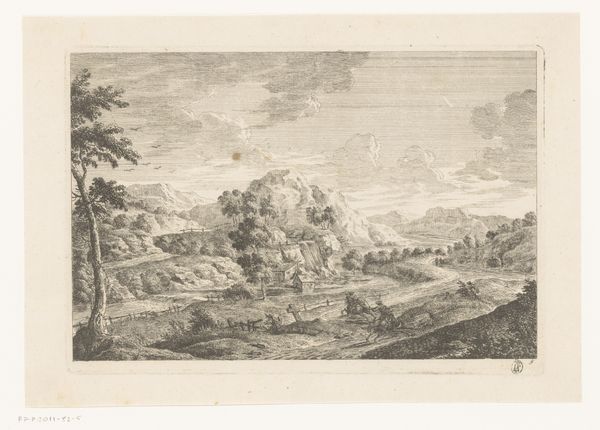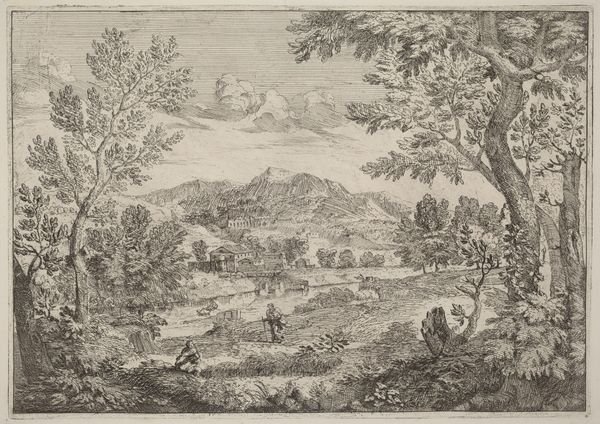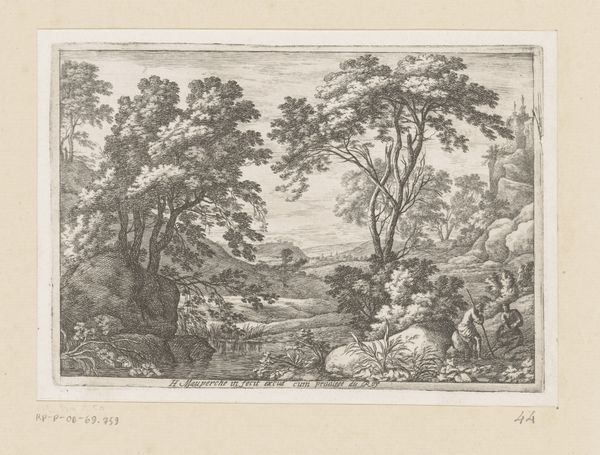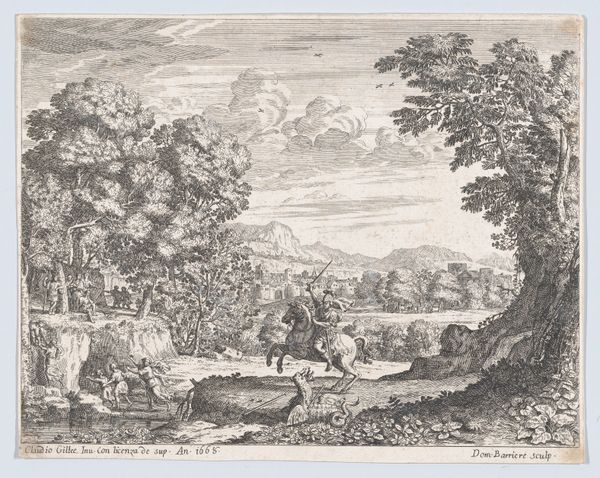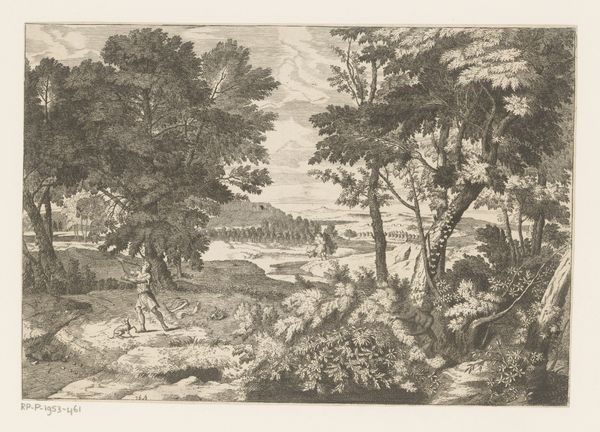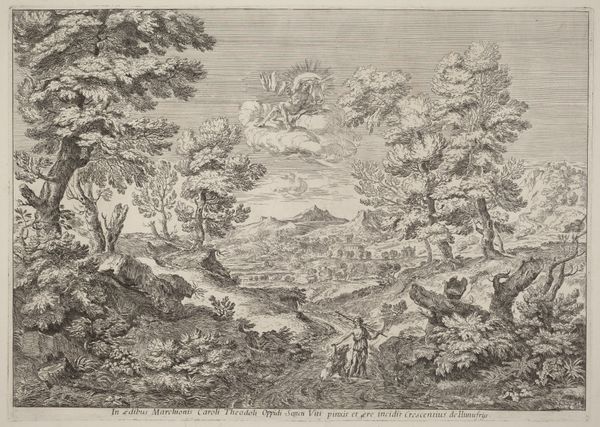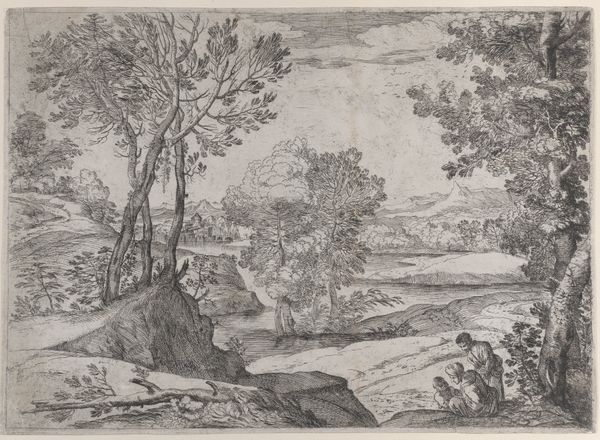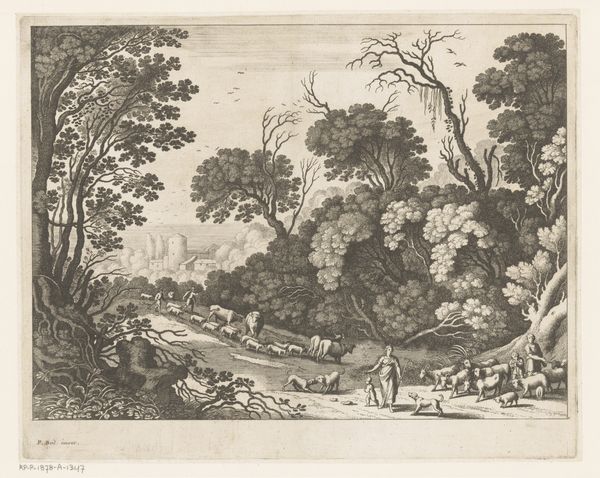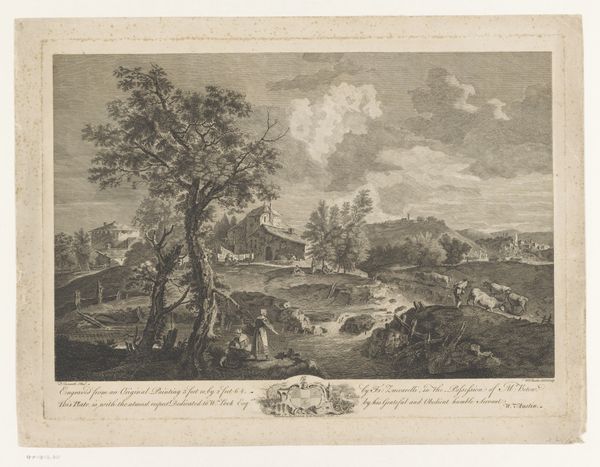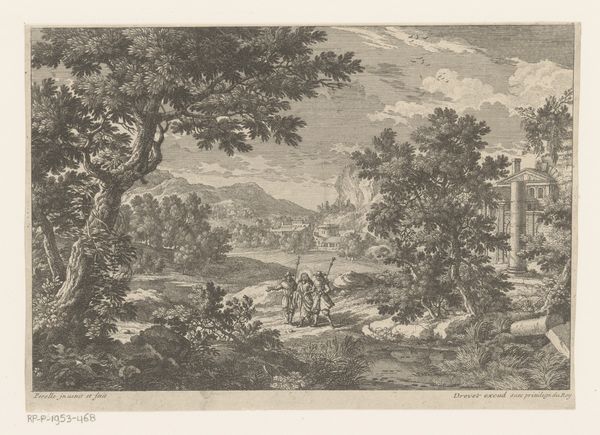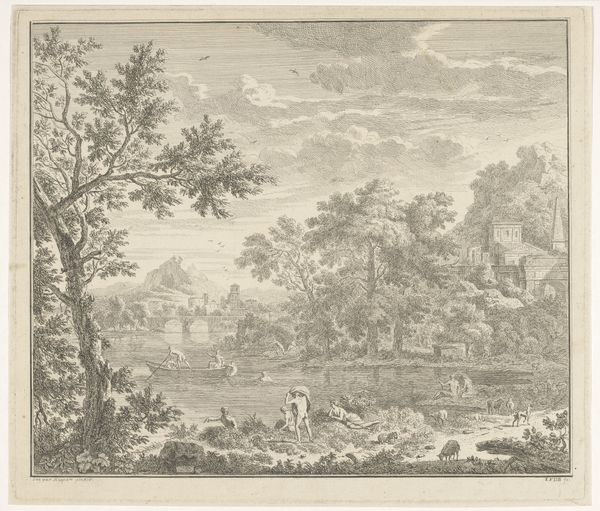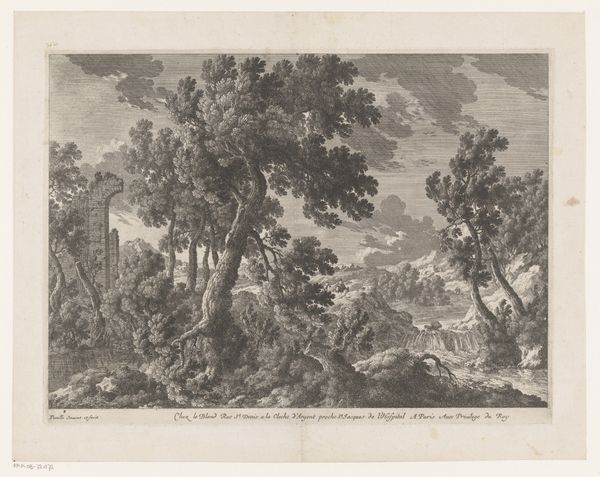
print, engraving
# print
#
landscape
#
genre-painting
#
engraving
Dimensions: 100 mm (height) x 166 mm (width) (plademaal)
Curator: Let’s turn our attention to this serene landscape, "Flod mellem bjerge," dating from 1746 to 1756, an engraving by Johanna Fosie. What strikes you initially? Editor: The composition—the strong diagonal created by the waterway is immediately arresting. There is a profound sense of balance between the elements that shape this natural scene: trees, rocks, mountains. I appreciate the interplay of positive and negative space created by the foliage and how this contrast allows my eye to meander. Curator: Indeed, the use of light and shadow, achieved solely through line work, is quite masterful, isn't it? Consider how this image speaks to the era’s artistic production, focusing on nature in response to the period’s societal and economic currents. The detailed rendering creates a world that seems at once accessible, but also distant from the lived experience. It makes one wonder who the target audience of such image would be, and the purpose it might fulfill. Editor: The figures introduce a certain dynamic. It invites reflection on the relationship between nature and humanity at this point in history. The relationship seems a co-dependent one here, since it is only via humankind’s presence that it gains narrative momentum. I also am fascinated by how the layering of line work and depth—foreground, middle-ground, background— creates a complete vista despite the monochromatic values. Curator: Precisely. The details on the foreground provide not just an anecdotal narrative, but suggest themes that are recurrent throughout this period, like the shepherd guarding his animals; that adds context of its reception by wealthy landowners eager to embrace their own idealized relationship with their environment. Editor: Considering the engraving as a medium, what semiotic role do you think it plays in conveying the details of nature here? Curator: Engravings allowed images to circulate in society, but even more, as landscapes are vehicles through which the era’s ruling powers shaped and defined territory, both real and imagined. It allowed them to assert the political role art serves, influencing how they relate to land and those living there. Editor: Fascinating. It gives a lot to consider about our own engagement with the natural world. Curator: Precisely. And it’s amazing to recognize it in what otherwise appears to be just a peaceful landscape.
Comments
No comments
Be the first to comment and join the conversation on the ultimate creative platform.
